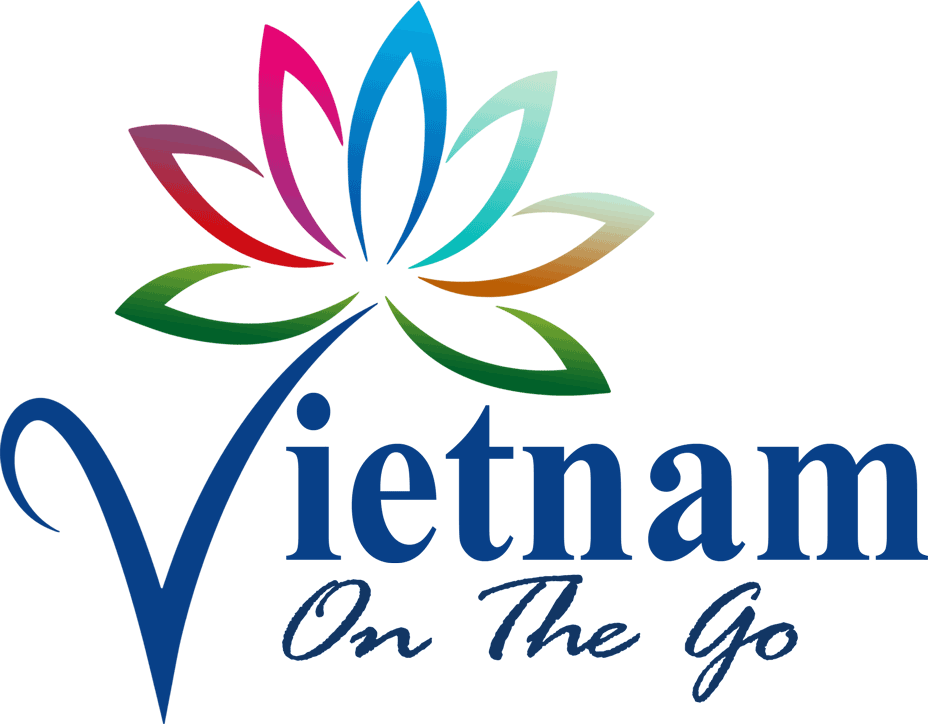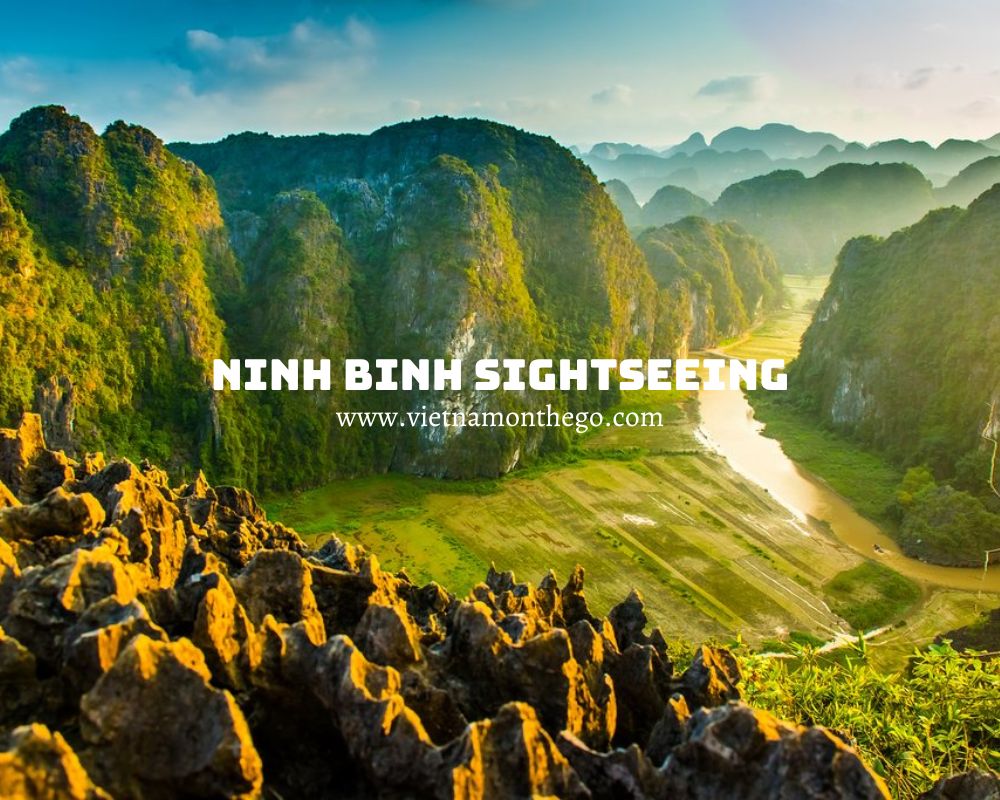Travel Guide, Ninh Binh
Top Must-See Ninh Binh Sightseeing for Travellers
Renowned for its breathtaking landscapes, rich cultural heritage, and historical significance, Ninh Binh is a paradise for sightseers and nature enthusiasts alike. From the enchanting Trang An Landscape Complex to the ancient wonders of Hoa Lu, this region offers a tapestry of experiences that will leave you in awe. Whether you’re an adventurer seeking breathtaking scenery or a history buff intrigued by ancient civilizations, Ninh Binh sightseeing has something to offer for everyone. Get ready to witness the beauty and charm of Ninh Binh as we explore its captivating sights and sounds.
Top Must-Visit Ninh Binh Sightseeing
Tràng An Landscape Complex
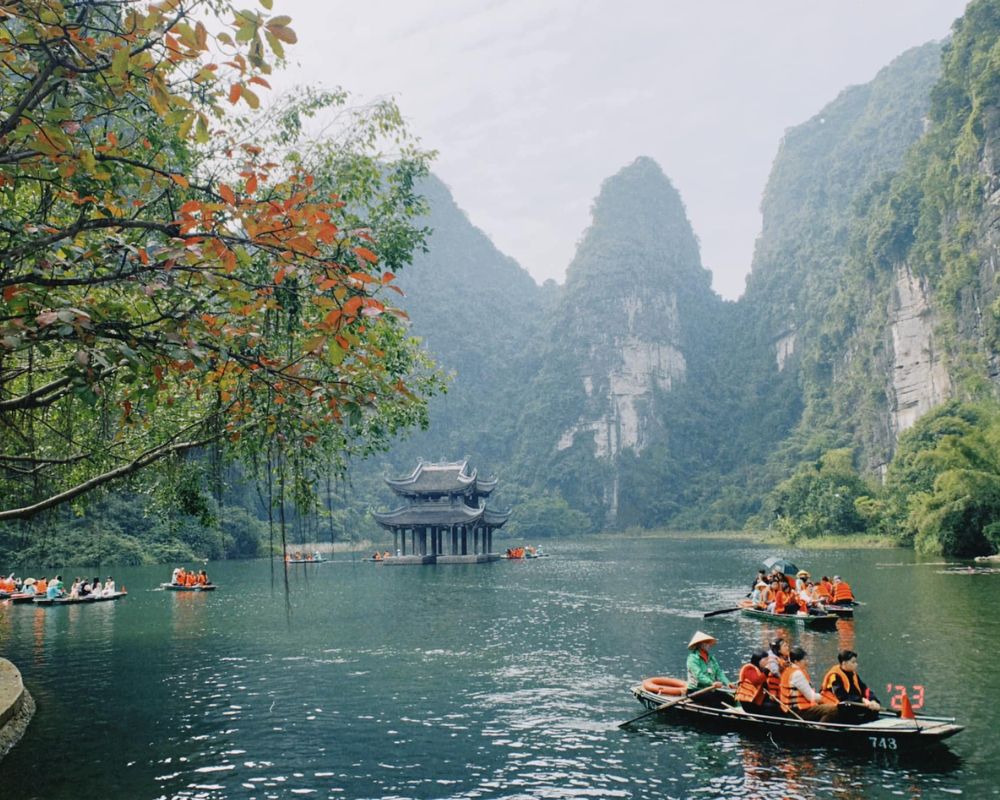
Tràng An Landscape Complex is currently the most famous tourist destination in Ninh Bình. With its stunning pristine natural scenery, Tràng An Ninh Bình has been recognized by UNESCO as both a natural and cultural heritage site.
Located 7km west of downtown Ninh Bình, Tràng An is one of the must-visit Ninh Binh sightseeing. It is an eco-tourism area within the Tràng An World Heritage Site, preserving and containing various ecosystems of flooded forests, limestone mountain forests, archaeological sites, and cultural historical relics. In 2014, Tràng An eco-tourism area was designated as a particularly important national monument by the Government of Vietnam and recognized by UNESCO as a dual World Heritage Site.
Often likened to a “Hạ Long Bay on land,” Tràng An attracts visitors with its diverse system of limestone mountains and natural caves. Visitors here can marvel at the mesmerizing natural scenery and enjoy moments of tranquility and relaxation in the unique cultural and spiritual space.
Tam Cốc – Bích Động
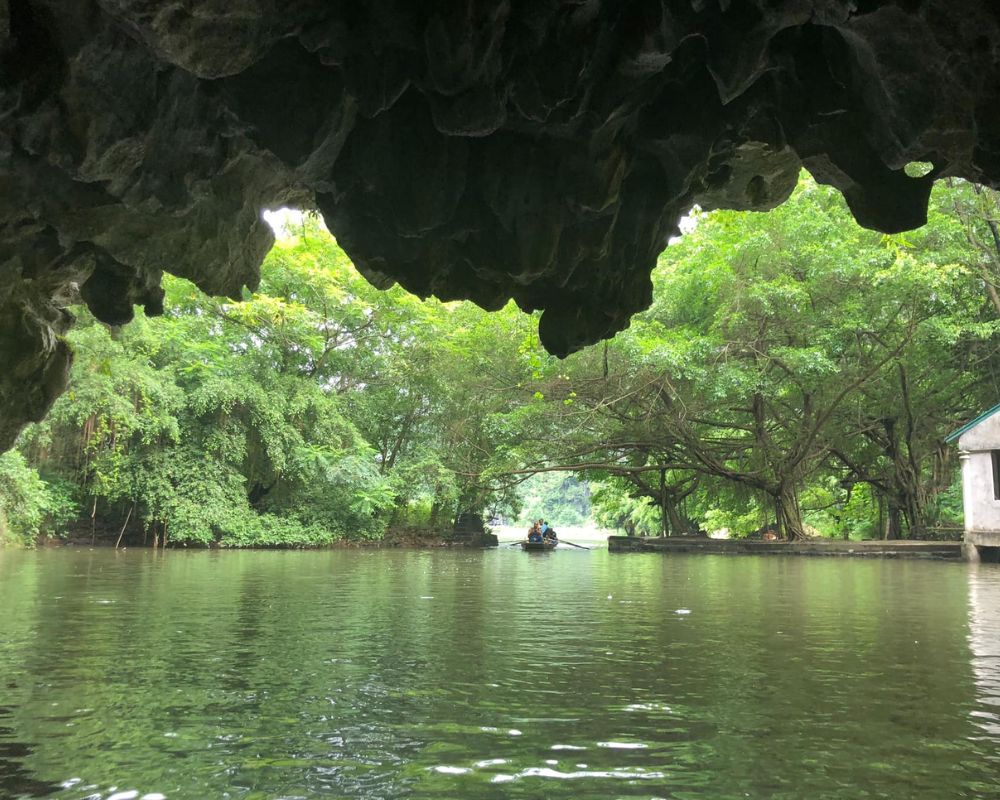
Located in Ninh Hải commune, Hoa Lư district, Tam Cốc – Bích Động is a familiar destination that tourists cannot miss when visiting Ninh Binh sightseeing. Exploring Tam Cốc, you can sit on a boat, glide along the romantic Ngô Đồng river, and admire the majestic mountain ranges and golden ripe rice fields. The poetic scenery here is sure to captivate any visitor. The boat ticket costs 150,000 VND for 4 people.
Additionally, visitors can also explore Bích Động, which consists of a dry cave on the mountainside and a water cave. On the mountain is Bích Động Pagoda, a ancient pagoda spread over 3 mountain tiers, where visitors can come to pray and offer incense. The entrance fee is 120,000 VND for adults and 60,000 VND for children.
Cúc Phương National Park
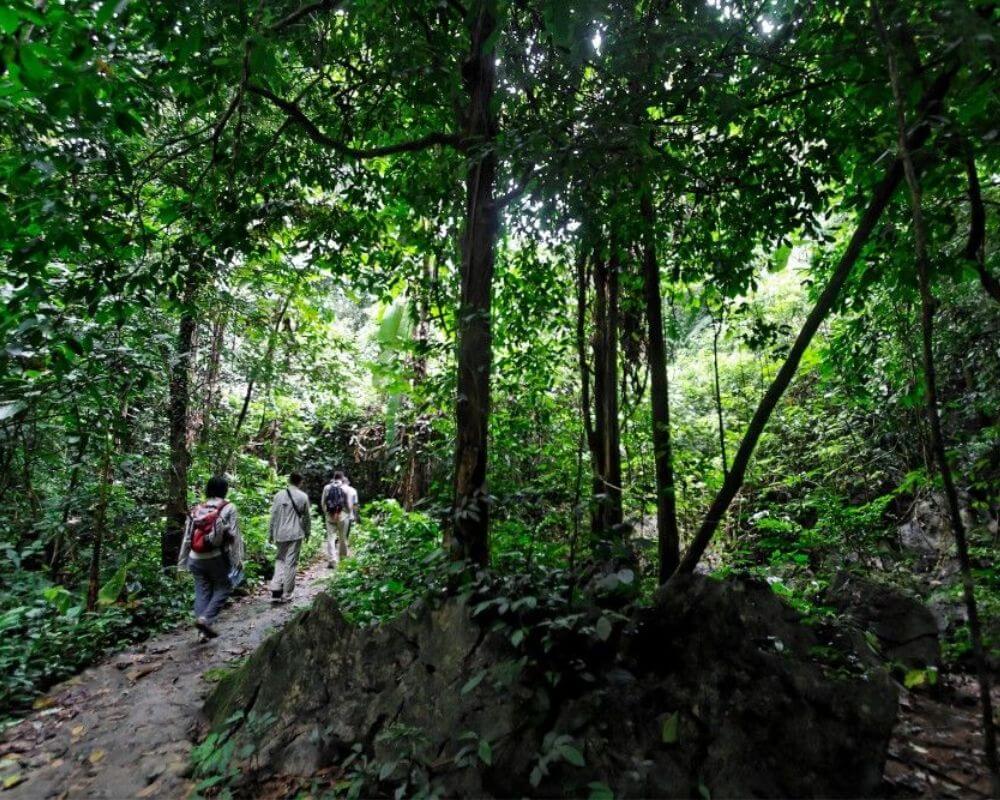
Cúc Phương National Park (or Cúc Phương Forest) is the first national park in Vietnam, located on the border of three regions: Northwest, Red River Delta, and North Central, spanning Ninh Bình, Hòa Bình, and Thanh Hóa provinces.
This national park plays a crucial role in conserving endangered species facing extinction. When visiting Cúc Phương, you can observe and learn about the rich flora and fauna typical of tropical rainforests.
Moreover, visitors have the opportunity to participate in eco-tourism activities, camping, adventure, or cultural and historical research. The entrance fee is 60,000 VND for adults, 20,000 VND for students, and 10,000 VND for children.
Phát Diệm Stone Church
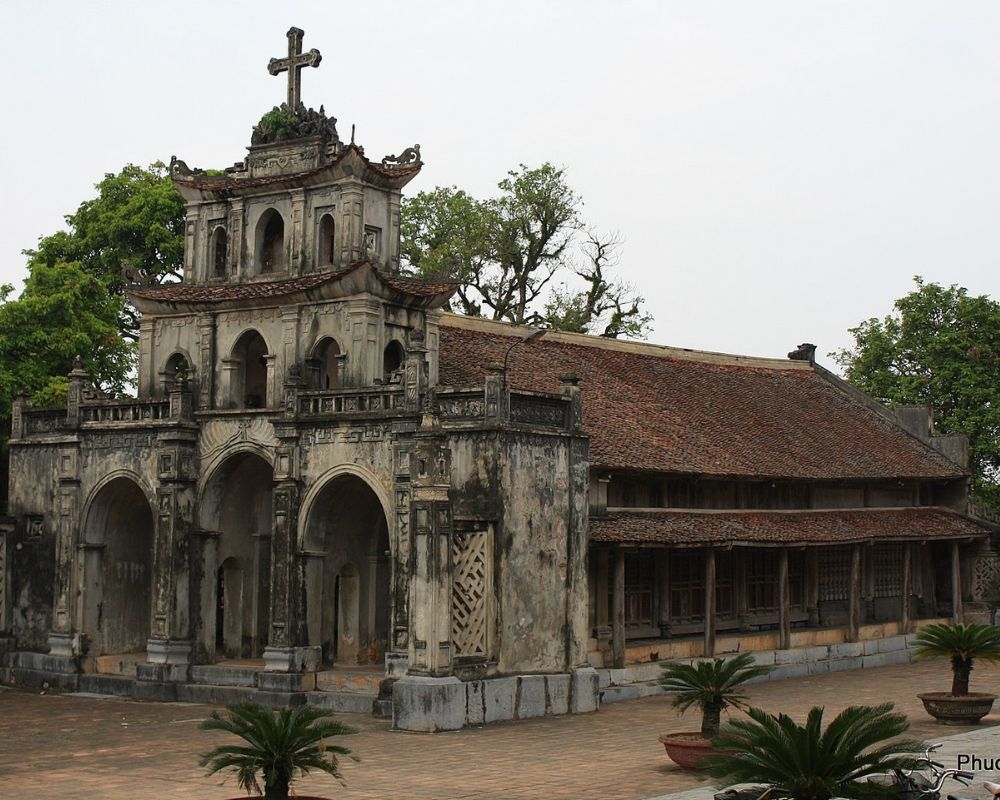
Phát Diệm Cathedral (commonly known as Phát Diệm Stone Church) is a complex of Catholic churches covering approximately 22 hectares, located in Phát Diệm town, Kim Sơn district. It is a significant religious structure, serving as the main cathedral of the Phát Diệm diocese in northern Vietnam.
Built entirely of stone and wood, Phát Diệm Cathedral was initiated in 1875 and substantially completed by 1898. Its unique feature lies in its imitation of traditional Vietnamese temple architecture despite being a Catholic church.
This architectural ensemble was gradually constructed under the supervision of Father Phêrô Trần Lục (also known as Father Sáu) – a priest in the Phát Diệm diocese since 1865) and Catholic followers over more than 30 years.
Hoa Lu Ancient Capital
Hoa Lư Ancient Capital is located in Trường Yên commune, Hoa Lư district, constituting an especially important national heritage site in Vietnam. This archaeological site includes the temples of Kings Đinh and Lê and numerous other monumental structures. Today, Hoa Lư Ancient Capital is a favorite destination for many tourists, especially those eager to learn about history or make pilgrimage visits.
Temple of King Dinh and Temple of King Le
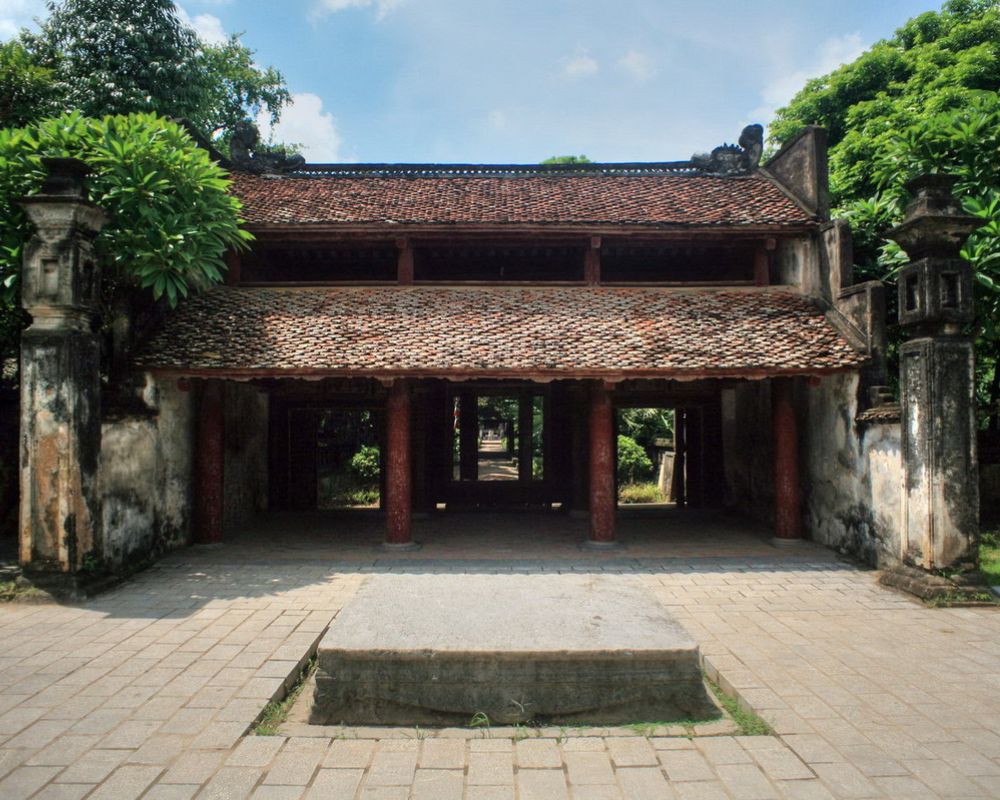
The Temple of King Đinh Tiên Hoàng is an important historical monument within the protected area of the Hoa Lư Ancient Capital heritage complex. The temple is situated in Trường Yên commune, Hoa Lư, Ninh Bình.
The Temple of King Đinh, along with the Temple of King Lê, is listed among the “Top 100 Famous Centennial Buildings in Vietnam.” Like other monuments in Hoa Lư Ancient Capital, the Temple of King Đinh is part of the Tràng An World Heritage Site recognized by UNESCO in 2014.
The Temple of King Lê Đại Hành is a national historical and cultural relic within the special monument area of Hoa Lư Ancient Capital, Ninh Bình province. The temple worships King Lê Đại Hành, Queen Dương Vân Nga, Lê Long Đĩnh, and also includes a shrine for Princess Lê Thị Phất Ngân and General Phạm Cự Lượng.
The temple is located 300 meters away from the Temple of King Đinh Tiên Hoàng, within the Eastern Capital of the ancient Hoa Lư, which is now Yên Thành village, Trường Yên commune, Ninh Bình.
Mua Cave
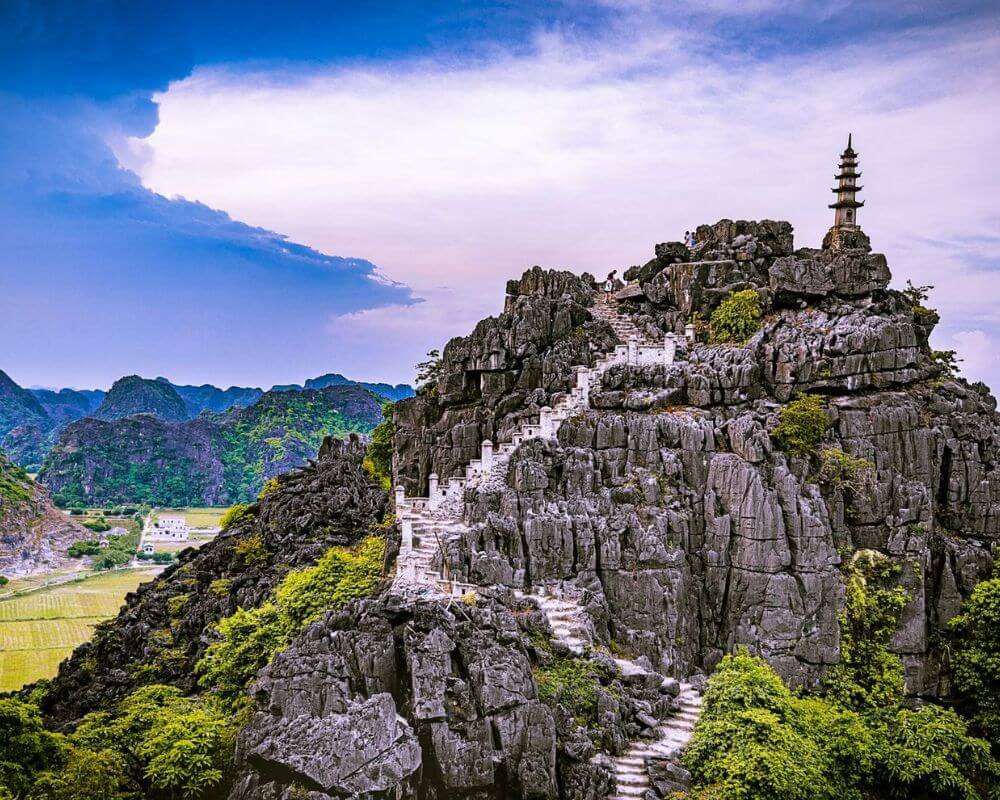
Mua Cave is situated at the foot of Múa Mountain, a tourist destination within the tourism complex of Khê Đầu Hạ village, Ninh Xuân commune. Although not as famous as other attractions in Ninh Bình, Mua Cave holds a special place in the hearts of visitors due to its breathtaking natural scenery and unspoiled environment.
From the foot of the mountain, you can see a series of steps leading to the mountaintop resembling a miniature Great Wall. Upon reaching the summit of Mua Mountain, you can admire the panoramic view of ripe rice fields stretching into the distance, with boats gently rowing along the water.
Van Long Nature Reserve
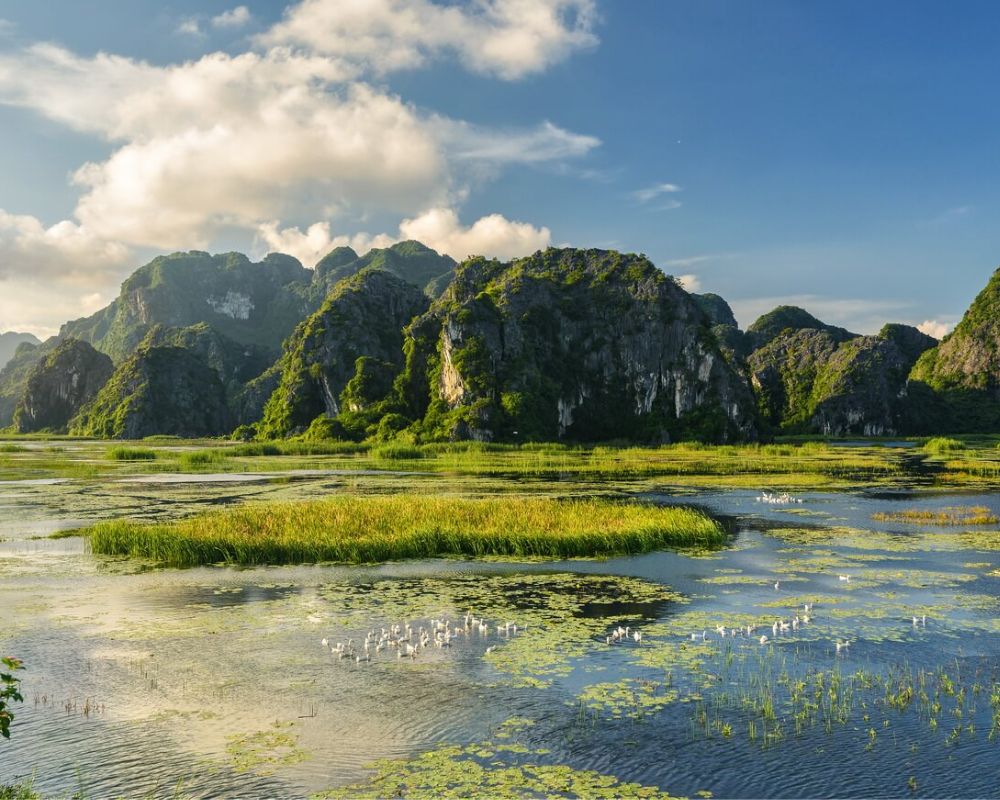
Van Long is the largest natural wetland conservation area in the northern Red River Delta region, located in the northeast of Gia Viễn district, Ninh Bình province. In 1999, it became a natural conservation area, listed in the roster of wetland protected areas and the inventory of Vietnam’s specialized forest system.
Not only is Van Long a natural conservation area, but it also boasts captivating landscapes. Van Long is dubbed the “bay without waves” because when sailing on the lake, visitors will see the water surface as flat as a giant mirror.
The water reflects the rugged contours of limestone mountains with names such as Mèo Cào, Mâm Xôi, Hòm Sách, Đá Bàn, Nghiên, Mồ Côi, Cô Tiên, creating a picturesque scene.
The entrance fee for visiting Vân Long is 20,000 VND per person.
Bai Dinh Pagoda
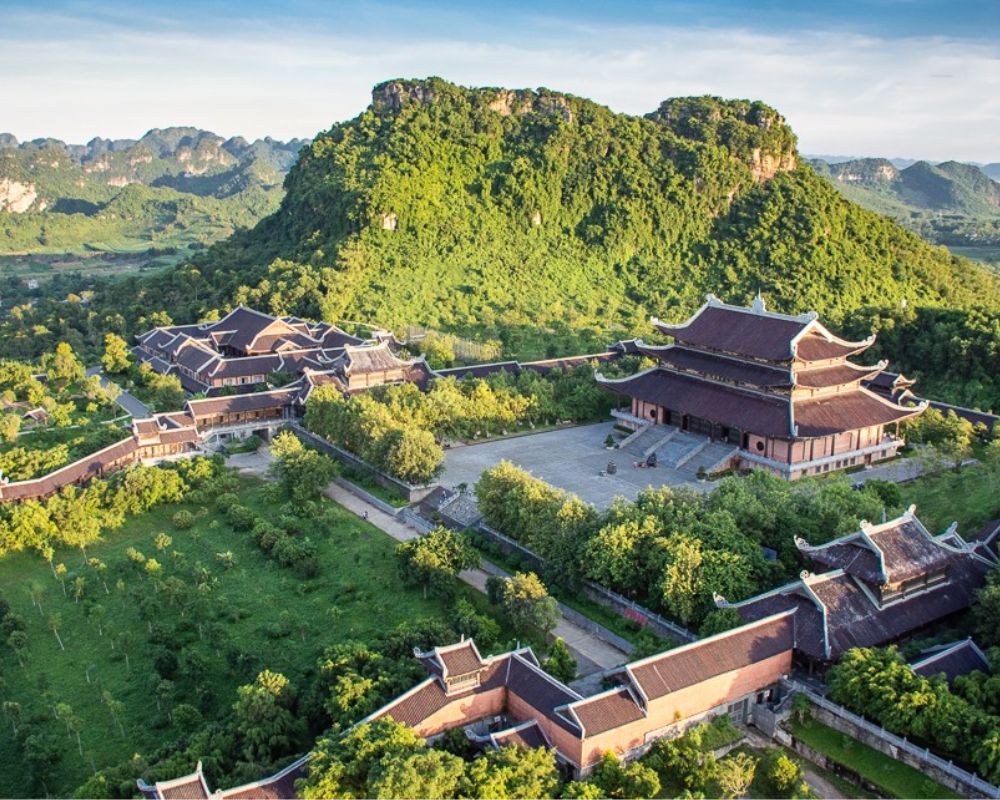
Located 15km from Ninh Bình city, Bai Dinh Pagoda is the largest temple complex in Vietnam with numerous records such as the largest bronze Buddha statue and the largest bell. It is also home to the largest bronze Buddha statue and the largest stone statue of Arhat in Vietnam.
The Bai Dinh Pagoda complex currently comprises an ancient temple area and a new temple area built in 2003. Besides being a sacred place, it impresses visitors with its magnificent architecture and unique landscapes, including the Tower of Stupa, a 100m tall Buddha statue, Bell Tower, Buddha Hall, Reincarnation Lake, etc.
Thung Nham Bird Garden
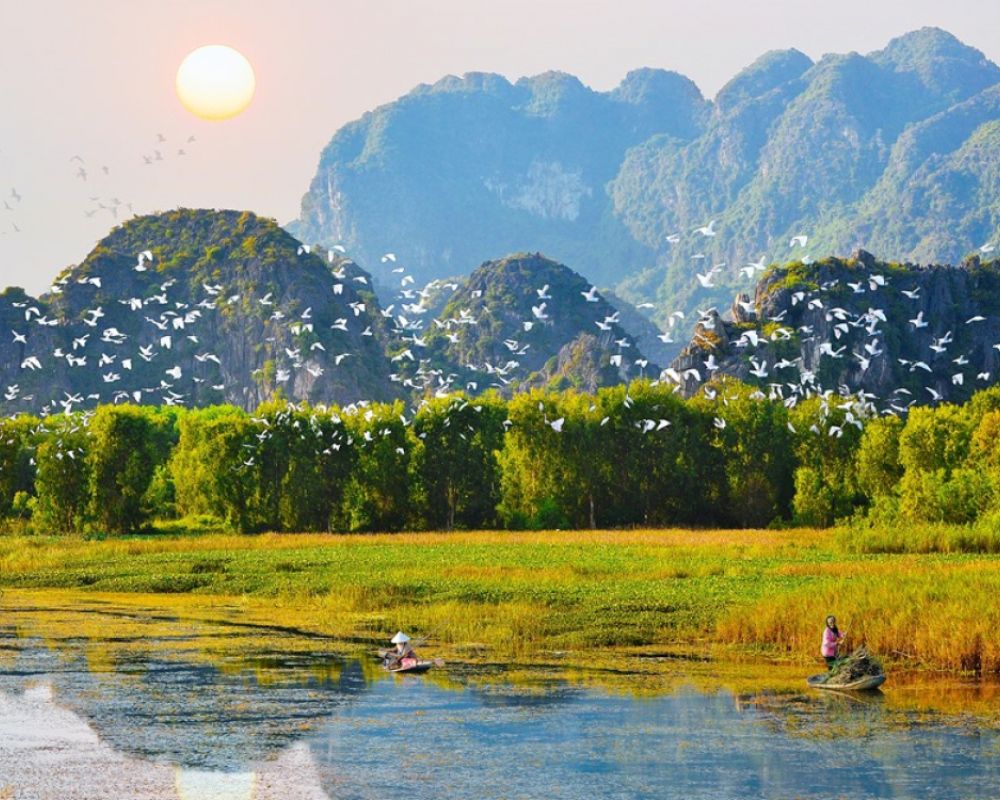
Thung Nham Bird Garden is one of the most attractive destinations in Ninh Bình, where culture, spirituality, and diverse biological landscapes converge. Surrounded by tropical forests on limestone mountains, with numerous caves and valleys blending with the natural greenery.
Here, you can discover the lives of nearly 40 bird species, with a total population of up to 50,000 birds. At sunset, flocks of white storks will fly over the wetland area, creating a fascinating and unique natural spectacle.
Practical Information for Ninh Binh Sightseeings
Best time to visit
The best time to visit Ninh Binh is from April to June and September to October when the weather is pleasant and rainfall is minimal. During these months, you can enjoy clear skies, moderate temperatures, and vibrant green landscapes. It’s important to note that Ninh Binh can get crowded during weekends and holidays, so planning your visit during weekdays or booking accommodations in advance is advisable.
How to get there
Ninh Binh is conveniently accessible from major cities in Vietnam. The nearest international airport is Noi Bai International Airport in Hanoi, which is approximately 90 kilometers away from Ninh Binh. From the airport, you can hire a taxi or arrange for a private transfer to reach Ninh Binh. Alternatively, you can take a train or bus from Hanoi to Ninh Binh, with the journey taking around two to three hours. Several tour operators also offer organized day trips or multi-day tours to Ninh Binh from Hanoi.
Once you arrive in Ninh Binh, there are various transportation options to explore the region. The most common mode of transportation for sightseeing is motorbike or scooter rental, which provides flexibility and convenience. You can rent a motorbike from local shops or your accommodation. However, ensure that you have a valid driver’s license and practice caution while riding on the roads. Alternatively, you can hire a taxi or use ride-hailing services to get around. Many of the popular attractions in Ninh Binh are located within a short distance from each other, making it feasible to explore by bicycle or even on foot.
Accommodation options
Ninh Binh offers a range of accommodation options that cater to different budgets and preferences. In the city center, you’ll find a variety of hotels, guesthouses, and hostels that provide comfortable and affordable stays. If you’re looking for a unique experience, you can opt for homestays in rural areas, where you can immerse yourself in the local culture and enjoy the warmth of Vietnamese hospitality. Additionally, there are luxury resorts and eco-lodges situated amidst the stunning natural landscapes of Ninh Binh, offering a tranquil and serene retreat.
Safety Tips and Precautions
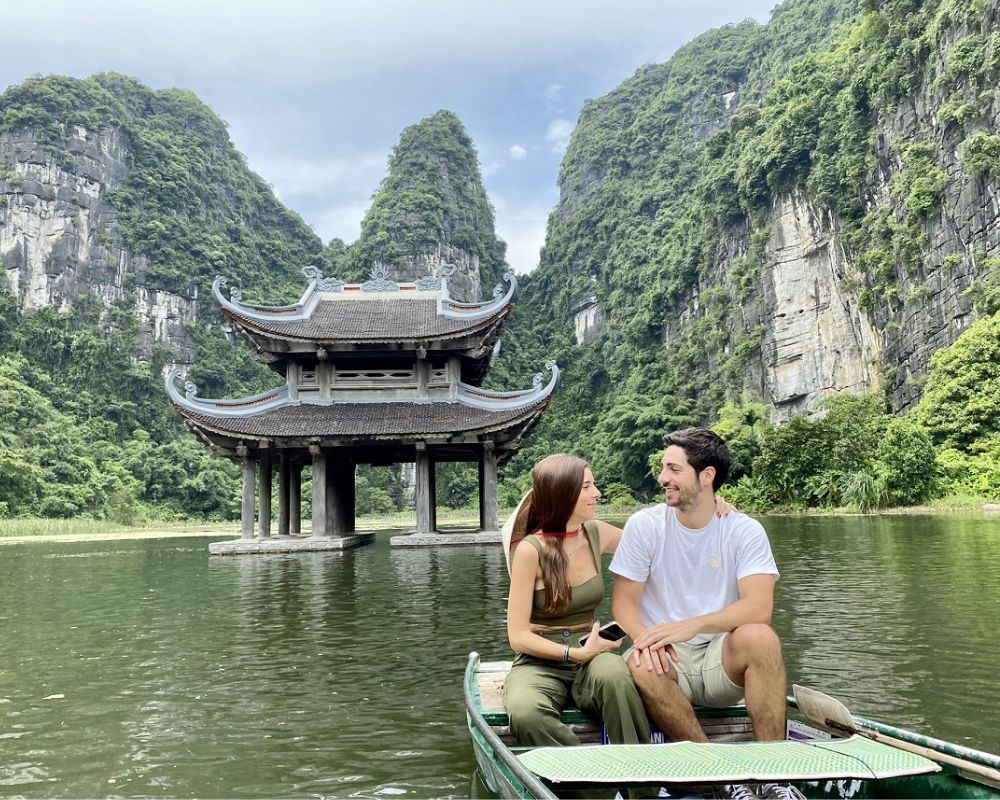
While visiting Ninh Binh sightseeing, it’s important to keep a few safety tips in mind.
- Stay hydrated and protect yourself from the sun, especially during hot summer months.
- Dress modestly and respectfully when visiting temples or religious sites.
- Take necessary precautions while riding motorbikes or bicycles, including wearing helmets and following traffic rules.
- Be cautious while exploring caves and grottoes, and follow the instructions of guides or signs for your safety.
- Keep your belongings secure and be aware of your surroundings, especially in crowded tourist areas.
Ninh Binh must-visit sightseeing FAQs
Is it safe to travel to Ninh Bình?
Yes, Ninh Bình is a safe destination for travelers. The region is known for its tranquil countryside, friendly locals, and low crime rates. However, as with any travel destination, it’s advisable to exercise caution and take basic safety precautions. This includes safeguarding your belongings, staying aware of your surroundings, and following any local guidelines or regulations. Overall, visitors can enjoy exploring the natural beauty and cultural heritage of Ninh Bình with peace of mind.
Is it necessary to book tickets in advance for attractions in Ninh Bình?
It’s not always necessary to book tickets in advance for Ninh Binh sightseeing, but it can be beneficial, especially during peak tourist seasons or for popular destinations like Tràng An and Bái Đính Pagoda. Booking tickets in advance can help you avoid long queues and ensure availability, particularly if you have specific dates or times in mind for your visit. However, for some smaller attractions or activities, you may be able to purchase tickets on-site without much difficulty. Ultimately, it depends on your preferences and the level of convenience you seek during your visit to Ninh Bình.
Are there any guided tours available in Ninh Bình?
Yes, there are several guided tours available in Ninh Bình, offering visitors the opportunity to explore the region’s stunning natural landscapes and rich cultural heritage with the assistance of knowledgeable guides. These tours typically cover popular attractions such as Tràng An Scenic Complex, Tam Cốc – Bích Động, Cúc Phương National Park, and more. Guided tours can include activities such as boat rides along picturesque rivers, hiking through limestone karst formations, and visits to historical sites and temples.
How much time should I allocate for sightseeing in Ninh Bình?
The amount of time you should allocate for sightseeing in Ninh Bình depends on your interests and the attractions you wish to visit. Generally, a minimum of one to two days is recommended to explore the main highlights of the region, including Tràng An Scenic Complex, Tam Cốc – Bích Động, and Hoa Lư Ancient Capital. However, if you want to delve deeper into the natural beauty and cultural heritage of Ninh Bình or participate in additional activities such as hiking, bird watching, or exploring caves, you may want to allocate three or more days.
In conclusion, Ninh Binh sightseeing is a treasure trove of natural and cultural wonders, offering an unforgettable sightseeing experience. From the majestic landscapes of Trang An and Tam Coc to the historical richness of Hoa Lu and the biodiversity of Cuc Phuong National Park, Ninh Binh has something for everyone. The region’s delectable cuisine, traditional handicrafts, and warm hospitality further enhance the visit. So, pack your bags, embark on an adventure in Ninh Binh, and prepare to be captivated by its beauty, history, and cultural heritage.
